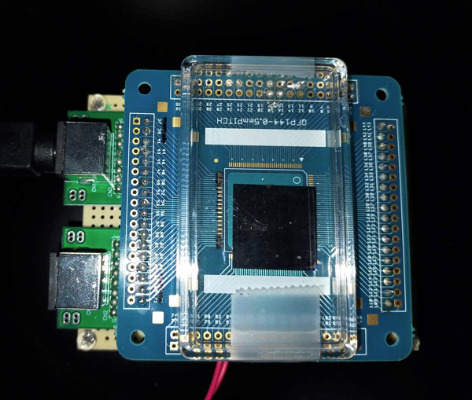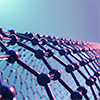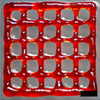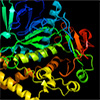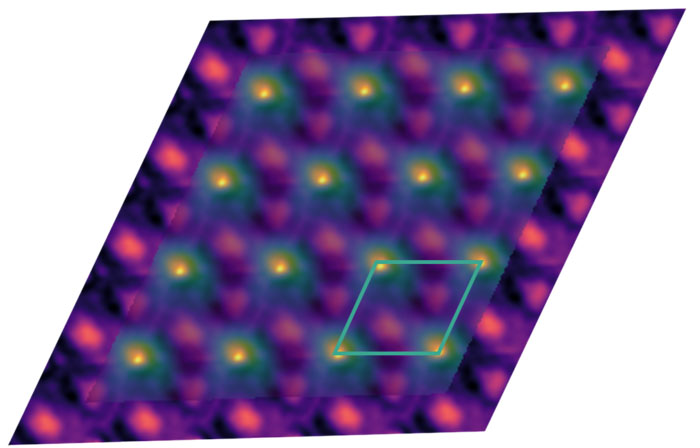Feb 09, 2023 (Nanowerk News) Antiferroelectric materials have electrical properties that make them advantageous for use in high-density energy storage applications. Researchers have now discovered a size threshold beyond which antiferroelectrics lose those properties, becoming ferroelectric. “Electronic devices are getting smaller and smaller, which makes it increasingly important for us...
Brain-inspired computing system based on skyrmions ‘reads’ handwriting
Feb 09, 2023 (Nanowerk News) A computing device that uses tiny magnetic swirls to process data has been trained to recognize handwritten numbers ("Pattern recognition with neuromorphic computing using magnetic field–induced dynamics of skyrmions"). Developed by RIKEN researchers, the device shows that miniature magnetic whirlpools could be useful for realizing...
Nickel nanowires enhance microwave absorption
Feb 09, 2023 (Nanowerk News) In a paper published in Advanced Materials Interfaces ("Magnetic field-induced synthesis of one-dimensional nickel nanowires for enhanced microwave absorption"), a research team reported the synthesis of polyvinylpyrrolidone coated nickel nanowires (PNNWs) by solvothermal method assisted by high magnetic field, and applied to enhance microwave absorption....
Nanocarbons for sustainable hydrogen production
Feb 08, 2023 (Nanowerk News) Hydrogen fuel could be a more viable alternative to traditional fossil fuels according to University of Surrey researchers who have found that a type of metal-free catalysts could contribute to the development of cost-effective and sustainable hydrogen production technologies. The study ("First Principles Microkinetic Modelling...
Biosensors change the way water contamination is detected
Feb 08, 2023 (Nanowerk News) Scientists from Northwestern University have collaborated on the implementation of an accurate, low-cost and easy-to-use test for detecting toxic levels of fluoride in water. The new biosensor device developed at Northwestern has been field tested in rural Kenya, providing evidence that water testing for fluoride...
Peptide 3D-printing inks could advance regenerative medicine
Feb 08, 2023 (Nanowerk News) How do you build complex structures for housing cells using a material as soft as Jell-O? Rice University scientists have the answer, and it represents a potential leap forward for regenerative medicine and medical research in general. Researchers in the lab of Rice’s Jeffrey Hartgerink...
Biosensor could lead to new drugs, sensory organs on a chip
Feb 08, 2023 (Nanowerk News) A synthetic biosensor that mimics properties found in cell membranes and provides an electronic readout of activity could lead to a better understanding of cell biology, development of new drugs, and the creation of sensory organs on a chip capable of detecting chemicals, similar to...
Ultrathin nanosheets for better hydrogen storage
Feb 07, 2023 (Nanowerk News) A collaboration including scientists from Lawrence Livermore National Laboratory (LLNL), Sandia National Laboratories, the Indian Institute of Technology Gandhinagar and Lawrence Berkeley National Laboratory has created 3-4 nanometer ultrathin nanosheets of a metal hydride that increase hydrogen storage capacity. The research appears in the journal...
Solving a machine-learning mystery
Feb 07, 2023 (Nanowerk News) Large language models like OpenAI’s GPT-3 are massive neural networks that can generate human-like text, from poetry to programming code. Trained using troves of internet data, these machine-learning models take a small bit of input text and then predict the text that is likely to...
Microscopy images could lead to new ways to control excitons for quantum computing
Feb 07, 2023 (Nanowerk News) Excitons are drawing attention as possible quantum bits (qubits) in tomorrow’s quantum computers and are central to optoelectronics and energy-harvesting processes. However, these charge-neutral quasiparticles, which exist in semiconductors and other materials, are notoriously difficult to confine and manipulate. Now, for the first time, researchers...


